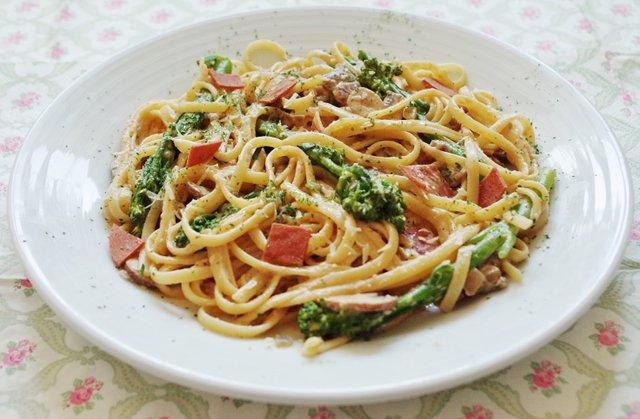Introduction:
Vegan Carbonara is a delightful twist on the classic Italian dish, offering a creamy and indulgent pasta experience without the use of animal products. This plant-based version captures the essence of traditional Carbonara by incorporating a rich and flavorful sauce made from cashews, nutritional yeast, plant-based milk, and aromatic spices. In this recipe, we explore the origins of Carbonara, guide you through the step-by-step process of creating a vegan adaptation, and invite you to savor the decadent flavors of Vegan Carbonara.
Origin of the Dish:
Carbonara is a beloved pasta dish that originated in Rome, Italy. Its exact origins are debated, but it is believed to have emerged in the mid-20th century. The dish's name is derived from "carbonaro," meaning charcoal burner, which suggests that it was a favorite among coal workers. Traditional Carbonara is made with eggs, cheese (usually Pecorino Romano or Parmigiano-Reggiano), pancetta or guanciale (cured pork jowl or cheek), and black pepper. These ingredients combine to create a creamy and savory sauce that coats the pasta.
Recipe:
Ingredients:
8 ounces spaghetti or fettuccine
1 cup raw cashews, soaked in water for at least 4 hours or overnight
1 cup plant-based milk (e.g., almond, soy, or oat)
2 tablespoons nutritional yeast
2 tablespoons lemon juice
2 tablespoons olive oil
4 cloves garlic, minced
1/2 cup diced vegan bacon or tempeh bacon
1/2 teaspoon black salt (kala namak) for an eggy flavor (optional)
Freshly ground black pepper, to taste
Fresh parsley or basil, chopped (for garnish)
Instructions:
Cook the spaghetti or fettuccine according to the package instructions until al dente. Drain and set aside.
In a blender, combine the soaked cashews, plant-based milk, nutritional yeast, lemon juice, and black salt (if using). Blend until smooth and creamy. Set aside.
Heat olive oil in a large skillet over medium heat. Add the minced garlic and sauté until fragrant and lightly golden.
Add the diced vegan bacon or tempeh bacon to the skillet and cook until crispy and browned.
Reduce the heat to low and pour the cashew sauce into the skillet. Stir well to combine the sauce with the bacon and garlic. Cook for a few minutes until heated through and thickened slightly.
Add the cooked pasta to the skillet and toss gently to coat the pasta with the sauce. If needed, add a splash of plant-based milk to loosen the sauce.
Season with freshly ground black pepper to taste. Be generous with the pepper, as it adds a distinctive flavor to the dish.
Garnish with freshly chopped parsley or basil.
Serve Vegan Carbonara immediately while hot and enjoy the creamy, comforting flavors.
Conclusion:
Vegan Carbonara offers a delectable plant-based twist on the classic Italian dish, allowing you to indulge in a creamy and flavorful pasta experience without the use of animal products. While the traditional Carbonara relied on eggs, cheese, and bacon for its distinct taste, this vegan adaptation showcases the versatility of plant-based ingredients. The creamy cashew-based sauce provides a luxurious texture and the addition of vegan bacon or tempeh bacon offers a smoky and savory element that perfectly complements the pasta.
